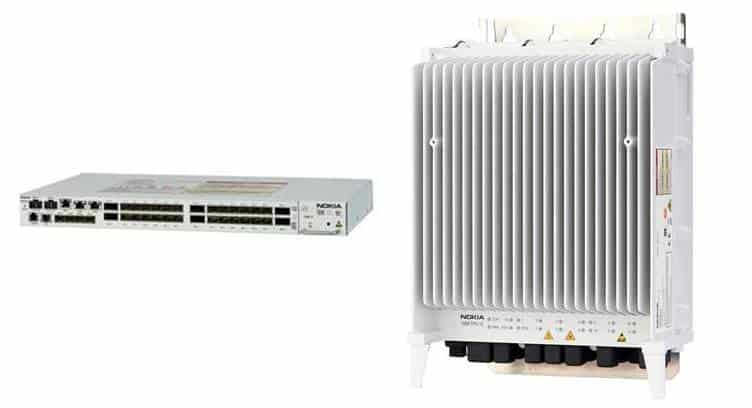Nokia this week introduced the 1830 Time-sensitive Packet Switch (TPS) family of time-sensitive networking (TSN) switches.
The new family of switches are designed to reduce the cost and complexity of Cloud RAN deployments by enabling packet-based transport for mobile fronthaul.
The launch comes as 5G is set to introduce support for applications that demand ultra-low latency – the time it takes for a signal to make a round-trip on the network. By distributing applications to multi-access edge computing (MEC) locations at the periphery of the network – closer to mobile users – signals travel shorter distances, dramatically reducing latency. Cloud RAN architectures enable this new class of time-sensitive applications by distributing certain RAN functions to the same MEC nodes at the edge of the network. Scalable, ultra-low latency, and deterministic mobile transport is required to meet the stringent infrastructure demands of Cloud RAN architectures, and the heightened user experience expectations of 5G time-critical services.
Employing strict traffic prioritization and frame pre-emption, the 1830 TPS creates deterministic paths through a switched Ethernet network. Such determinism was previously unavailable in packet-switched networks and is essential to ensuring the reliable delivery of critical traffic with stringent latency demands. High-precision timing provides accurate synchronization for 5G radios, while leveraging Nokia RAN expertise in mapping Common Public Radio Interface (CPRI) streams enables the 1830 TPS to achieve nearly 40% greater bandwidth efficiency than competing alternatives.
Marcus Weldon, Nokia's Corporate CTO and President, Nokia Bell Labs
As our customers roll out end-to-end 5G architectures, they need transport solutions that support existing fronthaul and backhaul traffic, as well as Cloud RAN architectures with optimized performance.
Sam Bucci, SVP of Optical Networking, Nokia
With the introduction of the 1830 TPS, we are fundamentally improving the economics of deploying 5G centralized and Cloud RANs.


















